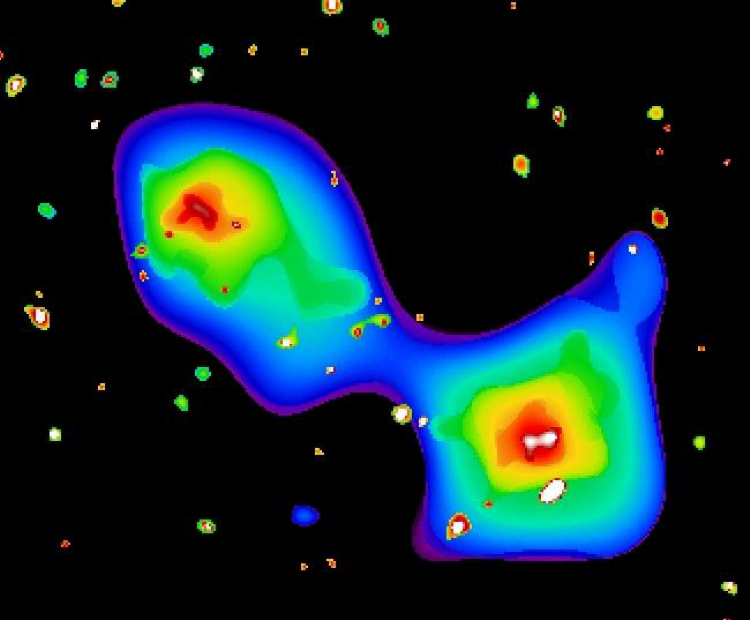
 Credit: N. Werner et al.; ESA
Credit: N. Werner et al.; ESA
One Behind the Other
The Universe is composed of clusters of galaxies; everything else is secondary. By studying such clusters astronomers trace the overall structure of the Universe writ large. But what defines a cluster? One of the best ways to study clusters of galaxies is by observing the hot gas that gets stuck in the immense gravitational trap formed by the mass of dark matter in the cluster. X-ray emission from this hot gas allows astronomers to measure densities, masses, temperatures, pressures and abundances of the trapped material. And sometimes reveal surprises. An observation of the cluster Abell 3128 by the XMM-Newton X-ray observatory, shown in false color above, showed that apparently two peaks of hot gas associated with the cluster. But deeper analysis revealed that one of the two peaks had a much lower abundance of complex elements than the other, which would be nearly impossible in a normal galaxy cluster. Further research showed that the low abundance gas was actually associated with a much more distant cluster, located behind Abell 3128. Identifying clusters at such different distances is an important test of the evolution of structure in the Universe.
<
HEA Dictionary ● Archive
● Search HEAPOW
● Other Languages
● HEAPOW on Facebook
● Download all Images
● Education ● HEAD
>
Each week the HEASARC
brings you new, exciting and beautiful images from X-ray and Gamma ray
astronomy. Check back each week and be sure to check out the HEAPOW archive!
Page Author: Dr. Michael F. Corcoran
Last modified Monday, 26-Feb-2024 17:34:15 EST


